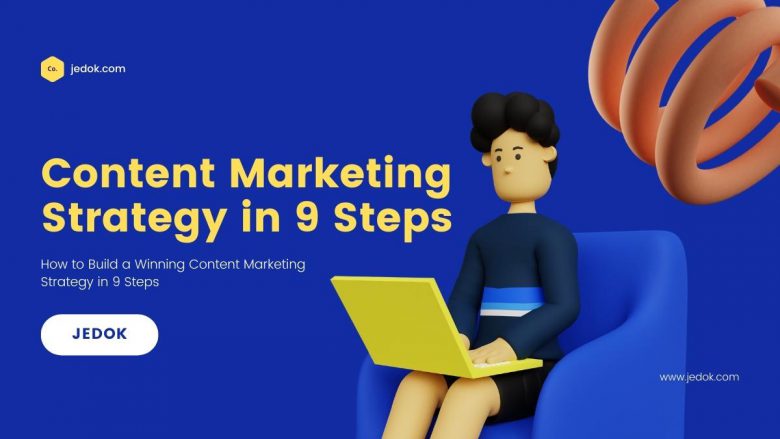
Any business with an online presence knows that content is key to a successful website. But what separates the best websites from the rest is a solid content marketing strategy.
What exactly is a content marketing strategy?
Content marketing is a strategic marketing approach focused on creating and distributing valuable, relevant, and consistent content to attract and retain a clearly-defined audience — and, ultimately, to drive profitable customer action.
So, what exactly is a content marketing strategy? It’s a plan that outlines how you’ll create and deliver content that aligns with your business goals.
Your strategy should answer key questions like: Who are we trying to reach? What kind of content will resonate with them? What channels will we use to distribute our content? And most importantly, how can we measure success?
An effective content marketing strategy requires careful planning and consideration. But the effort is well worth it. By aligning your content with your business goals, you can create a powerful engine for growth.
Below, I’ll explain how you can replicate our strategy in nine simple steps.
Step 1. Set a goal
When it comes to your content marketing strategy, setting a goal is essential to ensuring your success. Without a goal, you’ll have no way of measuring your progress or determining whether or not your content marketing efforts are paying off.
So what makes a good content marketing goal? First, it should be specific and measurable. Second, it should be realistic and achievable. And third, it should be aligned with your overall business goals.
Once you’ve set your content marketing goal, the next step is to develop a plan for how you’re going to achieve it. This will involve creating and curating engaging and valuable content, as well as promoting it through the channels that will reach your target audience.
By following these steps, you can ensure that your content marketing efforts are focused and effective and that you’re on track to achieving your desired results.
Step 2. Know your audience
When it comes to content marketing, the first step is always to understand who your audience is. Without this key piece of information, it will be difficult to create content that resonates and converts.
There are a few ways to go about understanding your audience. The first is to look at your customer data. If you have an existing customer base, you can segment them by demographics, interests, or even psychographics.
Another way to understand your audience is to look at your competition. See what kinds of content they are putting out there and who their target audience is. You can also use social media listening tools to see what kind of conversations are happening around your industry.
Once you have a good understanding of who your target audience is, you can start creating content that appeals to them.
Step 3. Choose a content type
When it comes to your content marketing strategy, the first step is deciding what type of content you want to create. This will be based on your goals and objectives, as well as your target audience.
There are many different types of content that you can create, from blog posts and articles to videos and infographics. It’s important to choose the right type of content for your audience and for the goals that you want to achieve.
Here are some things to consider when choosing a content type:
- What type of content does your audience prefer?
- What kind of content will help you achieve your goals?
- What format will be most effective for delivering your message?
- What resources do you have available for creating this type of content?
Step 4. Find what people are searching for
As you develop your content marketing strategy, it’s important to consider what people are searching for online. This will help you create content that is relevant to your audience and more likely to be found by potential customers.
To find out what people are searching for, start by using keyword research tools like Google AdWords Keyword Planner and Moz Keyword Explorer. These tools will help you identify relevant keywords and phrases that people are using to search for information online.
Once you know what keywords to target, you can start creating content that includes these keywords. In addition to helping you attract more visitors to your website, this will also help improve your search engine ranking for these keywords, making it even easier for people to find your content.
Step 5. Prioritize the most promising topics
After you’ve brainstormed a list of potential topics for your content marketing strategy, it’s time to prioritize which ones are the most promising. Here’s how to do it:
- Consider your audience. Who are you trying to reach with your content? What kinds of things are they interested in? Make sure your topics appeal to your target audience.
- Think about what you want to achieve with your content. What is your goal? Are you trying to generate leads, build brand awareness, or something else? Choose topics that will help you achieve your desired results.
- Evaluate each topic’s feasibility. Can you realistically create quality content about the topic? Do you have the resources (time, money, etc.) to do it? Make sure the topics you choose are feasible for your team to execute.
Step 6. Create a content calendar
If you want your content marketing strategy to be successful, you need to create a content calendar. This will help you stay organized and on track, and make sure that your content is fresh and relevant.
Here’s how to create a content calendar:
- First, decide what kind of content you want to produce. This could be blog posts, articles, infographics, videos, or anything else that will help you achieve your goals.
- Next, come up with a schedule for creating and publishing this content. You may want to publish something new every day, or every week. Find a schedule that works for you and stick to it.
- Finally, start creating your content! Make sure to stick to your schedule, and don’t forget to promote your content once it’s published.
Step 7. Promote your content
Assuming you have a blog and want to increase web traffic to it, content promotion is key and there are several ways to go about it. One way is to submit your blog URL to popular search engines such as Google, Yahoo, and Bing. This will help your blog show up in search engine results pages (SERPs) when people search for topics related to your blog content.
Another way to promote your content is through social media. Share your blog posts on Twitter, Facebook, LinkedIn, and other social networking sites. This will help get the word out about your latest content and drive traffic back to your site.
Finally, don’t forget about email marketing. Send an email blast to your list of subscribers informing them of your latest post. Include a link back to the post so they can read it.
Step 8. Monitor the results
After you’ve put all the pieces of your content marketing strategy together and launched it, it’s time to monitor the results. Keep an eye on your metrics so you can see how well your content is performing.
Look at things like pageviews, unique visitors, time on site, social shares, and any other engagement metric you’re tracking. If you see a decline in any of these metrics, it could be a sign that something isn’t working with your content.
Make sure to keep an eye on your competition as well. See what they’re doing that’s working well and try to replicate their success. Also, take note of any changes they make to their own content marketing strategy so you can adjust yours accordingly.
Step 9. Refresh your content
If your content marketing strategy is starting to feel a little stale, it might be time for a refresh. Here are 9 easy ways to breathe new life into your content and keep your audience engaged.
- Keep an eye on competitor content. See what’s working well for them and try to adapt those ideas for your own audience.
- Make use of social media trends. If something is hot on Twitter or Facebook, there’s a good chance you can work it into your content in some way.
- Use evergreen topics. These are timeless topics that will always be relevant to your audience. By creating content around these topics, you can ensure that your material will have a long shelf life.
- Put a fresh spin on old ideas.
Final thoughts
Similar to investing in index funds is content marketing. The returns are modest in the short run. However, if you persevere and keep investing over the long term, it can produce large profits.
The same holds true for content marketing. Starting something requires work, and working takes time. But if you put sustained effort into it, you’ll see results.



One Comment